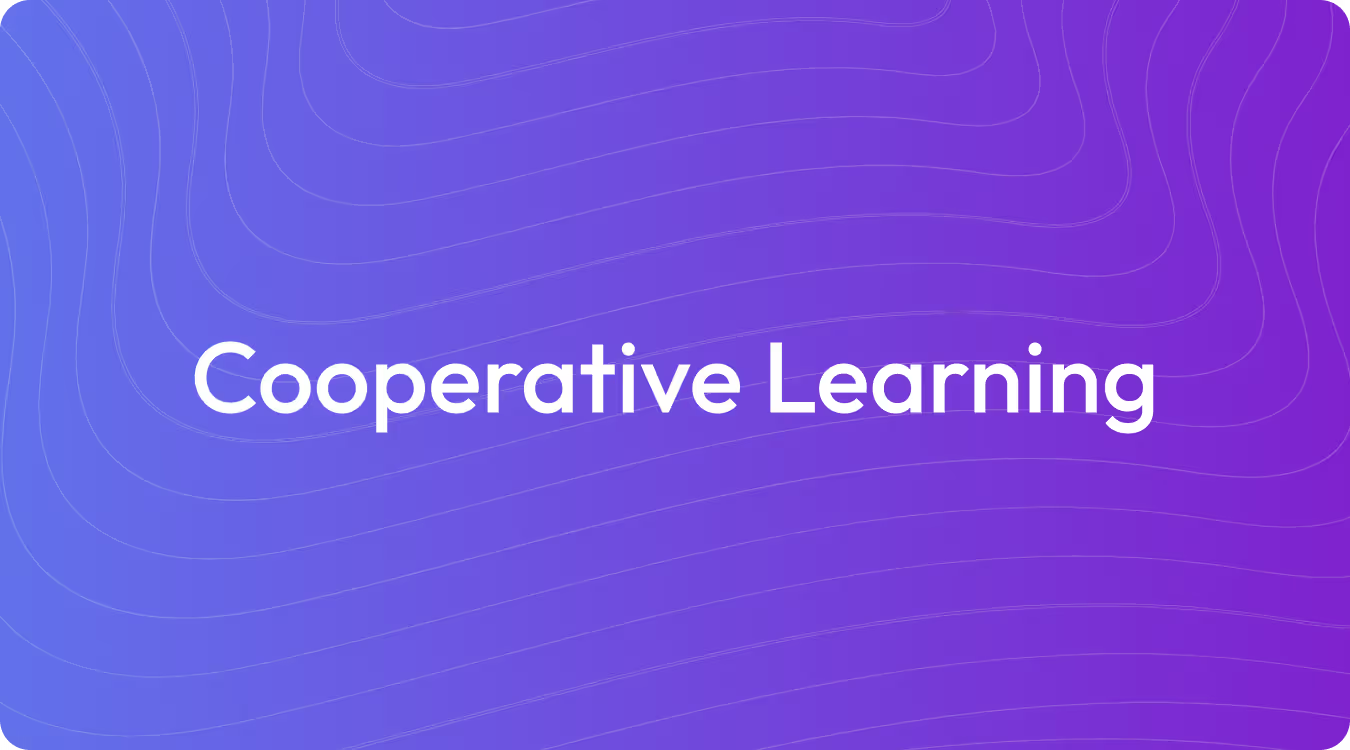What Is Academic Discussion?
-min.png)
What Is Academic Discussion?
Academic discussion is a structured classroom conversation where students can clearly express their ideas and learn from their peers. It is a process that goes beyond simple participation, encouraging students to add to what others have said, clarify their own thoughts, and even respectfully disagree. This type of dialogue helps develop critical literacy skills by teaching students how to connect their thoughts to those of others, building a conversation where every student can contribute and be heard.
.png)
Academic Discussion Strategies and Activities
Moving beyond simple hand-raising can turn classroom discussions into a more effective learning tool. These strategies help create a space for student-driven dialogue where they learn to make claims and support them with evidence. This approach uses structured formats to build student confidence and clarity.
Effective academic discussion activities often begin with a rich prompt or text that invites analysis and interpretation. They typically include a specific discussion structure, prompts to support academic language, and opportunities for student reflection.
Here are some strategies and activities for academic discussion:
- Socratic Seminar: Students sit in a circle to discuss a text using open-ended questions, supporting their claims with textual evidence.
- Philosophical Chairs: Students physically position themselves in the room based on their agreement or disagreement with a statement and then defend their positions.
- Fishbowl: A small inner circle of students discusses a topic while a larger outer circle observes, takes notes, and may rotate into the discussion.
- Think-Pair-Share: Students think about a question individually, discuss their ideas with a partner, and then share their combined thoughts with the larger group.
- Gallery Walk: Students move in small groups between different stations around the room, discussing the prompts or tasks at each one.
- Spiderweb Discussion: This method visually maps student participation to analyze the flow of conversation and encourage equitable contribution.
- Affinity Mapping: Students write ideas on notes, group them into related categories, and then discuss the connections between the categories.
- Concentric Circles: Students form two circles, one inside the other, and rotate to discuss questions with a series of new partners.
- Backchannel Discussion: This is a silent, parallel conversation that happens on a digital tool while another class activity is taking place.
- Talk Moves: This strategy uses sentence frames and direct instruction to help students learn how to express ideas and interact respectfully in an academic setting.
Academic Discussion Benefits
Structured academic discussion moves classroom conversation beyond simple hand-raising. It provides a format for student-driven dialogue where they can learn to make claims, support them, and consider different ideas. This approach uses specific structures to help students build their communication skills and reflect on their learning.
These discussions can increase student interaction and allow teachers to check for understanding in real time. However, they also present challenges, such as the potential to go off-topic and difficulties for students who are not auditory learners or who have weak note-taking skills.
Here are some potential outcomes of academic discussion:
- Increased Interaction: Provides a setting for more direct communication between the teacher and students.
- Student Articulation: Helps students practice forming and expressing their ideas in a group setting.
- Peer Response: Students learn to listen to, evaluate, and respond to the opinions of their classmates.
- Focus and Involvement: The interactive format can keep students involved, as they may be called on to participate.
- Support for Auditory Learners: The conversational format is often well-suited for students who learn best by listening.
- Assessment Opportunity: Teachers can ask questions during the discussion to check what students are retaining.
- Instructional Flexibility: The direction of the lesson can be guided by the flow of the conversation rather than a fixed lecture.
- Development of Critical Thinking: The process encourages students to analyze information and form their own conclusions.
- Varied Method: It offers a change from more traditional, lecture-based teaching methods.
- Questioning Comfort: Some students may feel more comfortable asking questions in a discussion format compared to a lecture.
Academic Discussion Examples
Many educators find that asking a broad question to the class can be met with silence. Students often have thoughts to share but may be hesitant to speak up in a large group setting, which is where structured discussion formats can be useful.
Without a clear structure, students may feel vulnerable or reluctant to share their ideas publicly. Discussions can also be unpredictable, and some protocols may not work as intended for every group of students.
Here are some examples of academic discussion formats:
- Turn and Talk: Students are invited to turn to a peer and take turns sharing their responses to a prompt, which can reduce the pressure of speaking in front of the whole class.
- Save the Last Word for Me: In small groups, each student selects a quote of significance to share, and the group discusses its meaning before the student who chose it explains their reasoning.
- Socratic Seminar: A whole-class discussion format where students engage in open-ended dialogue about a text, building on each other's ideas and referencing specific passages.
- Written Responses: When verbal discussion is challenging, students can write down their thoughts, providing an alternative form of participation.
Academic Discussion Best Practices
Applying best practices to academic discussion can create a space for student-driven dialogue. These guidelines help students learn to make claims and engage with different ideas within a structured format that builds clarity and community.
To implement these practices, you can involve students in creating the discussion guidelines to build a sense of responsibility. It is also helpful to have a specific plan for using a chosen structure, such as the Question Formulation Technique, in your classroom.
Here are some best practices for academic discussion:
- Listen respectfully: Participants should listen without interrupting and with the goal of understanding others’ views.
- Criticize ideas, not individuals: The focus of criticism should remain on the concepts being discussed rather than the people presenting them.
- Allow for equitable participation: All students should have the opportunity to speak during the conversation.
- Avoid assumptions: Do not make generalizations about social groups or ask individuals to speak for a group they are perceived to belong to.
- Maintain confidentiality: Any personal information shared during the discussion should be kept private by all participants.
Teach with TeachShare
Academic discussion is a powerful way to build a classroom community where students can express their ideas, learn from one another, and think critically. Our platform makes it easy to apply these principles with Boosts, which are research-backed strategies like inquiry and scaffolding that you can add to any resource in a single click. This feature helps you intentionally design lessons that deepen student thinking and support different learning needs. Start creating resources with TeachShare now.
Frequently Asked Questions
Answer





-min.png)

-min.png)